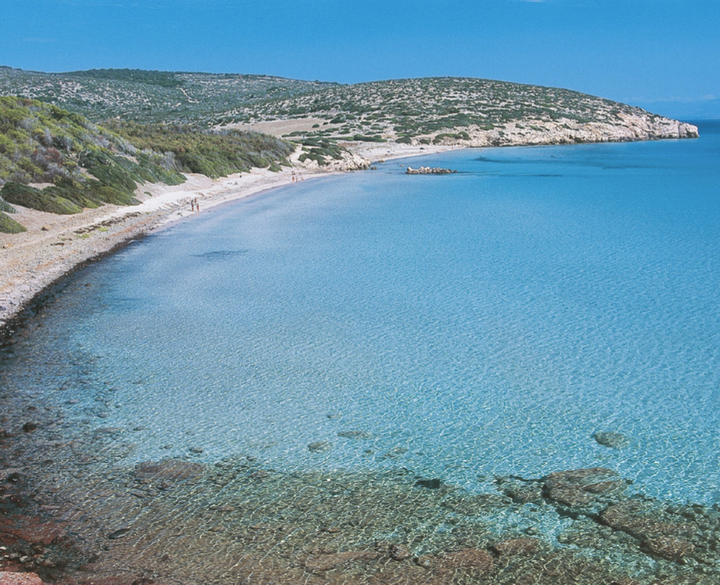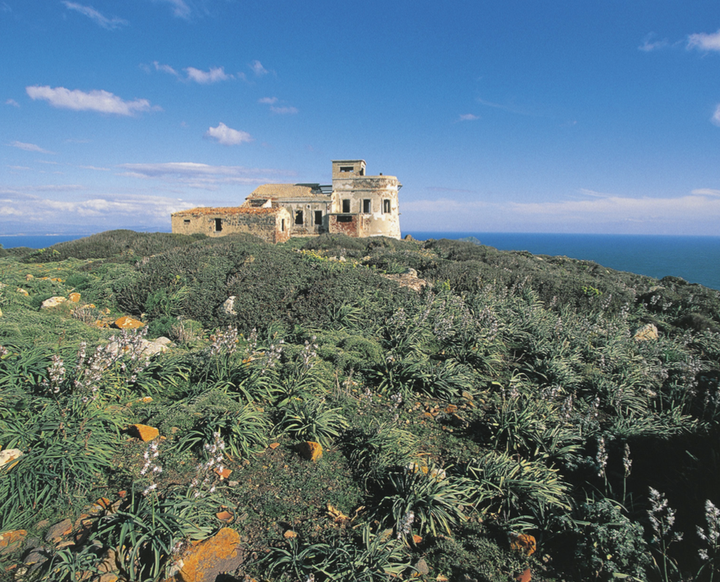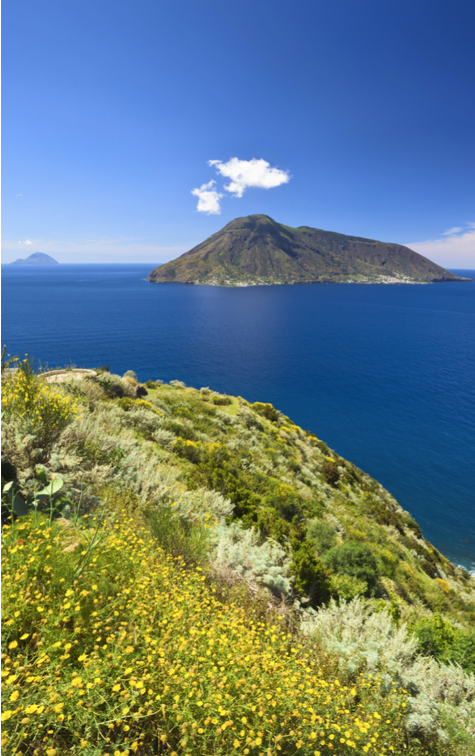
Small, isolated and beautiful: when Italy’s favorite islands in the summer—with Capri and Elba topping the list—don’t offer a single peaceful corner and are crawling with tourists, all you need to do is grab the next ferry and head to a peaceful paradise. These six islands, measuring just a few square miles, offer a modern vacation dream, Robinson Crusoe style, with sun, the Mediterranean and a bit of privacy.
ALICUDI
Alicudi is the smallest of the Aeolian Islands and is less than an hour by ferry from Cefalù (Sicily). Arriving passengers are welcomed by a couple of donkeys, the only means of transportation that can negotiate the mule track winding its way through the village, which has a population of less than 100 people in the summer and is dotted with orange aloe blossoms and purple bougainvillea. The town sits at the foot of Mount Filo dell’Arpa; the summit can be reached by climbing 700 steps that go through olive trees, caper plants and grapevines. Casa Mulino (http:// www.alicudicasamulino.it/) and Hotel Ericusa (http://www. alicudihotel.it/) have rooms for a maximum of 100 euros a night for two people in high season. L’Airone is a small restaurant with a terrace overlooking the sea, and offering excellent fresh fish for around 25 euros.
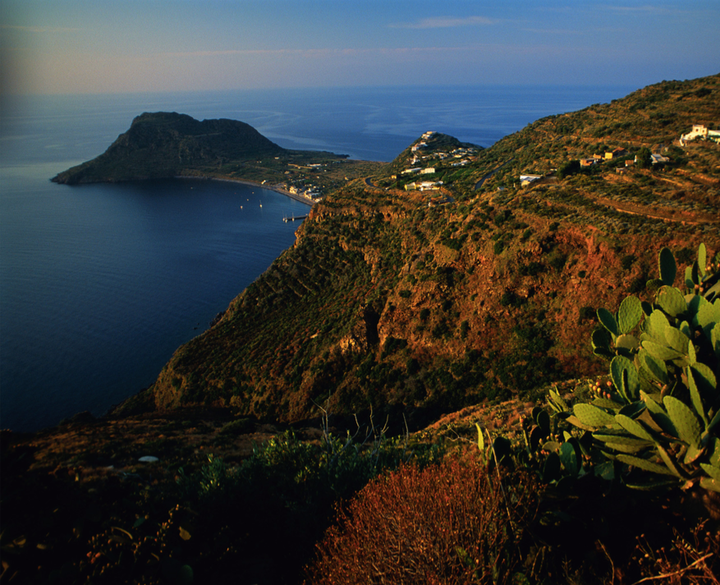
FILICUDI
Filicudi is the wildest of the Aeolian Islands. For complete peace, you need to go to Capo Graziano, dotted with secluded coves. The two beaches of Porto and Pecorini are the most popular. The symbol of Filicudi is the Canna, a stack that is over 240 meters tall, rising from the sea and bearing witness to the eruption of an ancient underwater volcano. The island is crisscrossed with old stone trails going up to an altitude of over 2500 feet, to the top of an inactive volcano that dominates the small atoll. For a low-cost overnight stay, there is Casa Vacanze Cannetomare. Then head to one of the island’s prettiest restaurants for a delightful evening: Hippocampus, with a terrace overlooking the water.
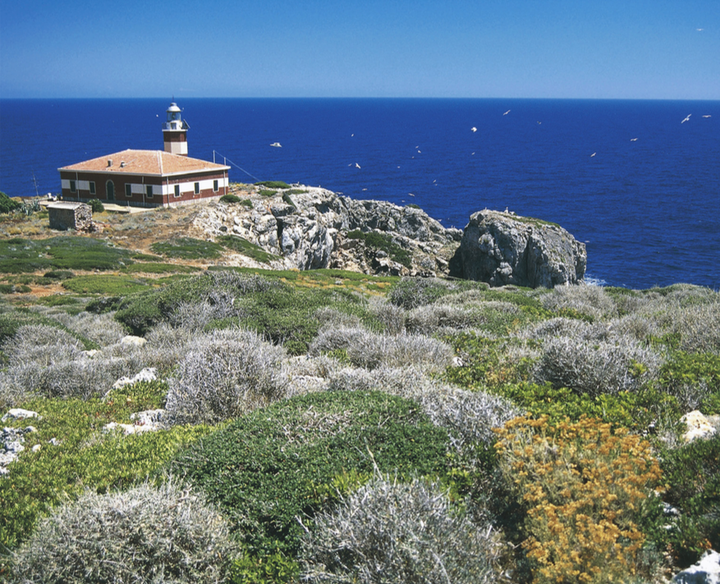
GIANNUTRI
The realm of nature and visitors who care about the environment, Giannutri is a tiny refuge in the Tuscan archipelago. It can be reached from Porto Santo Stefano, on the Argentario coast. The island is a protected marine park and has plenty to offer for those who love to hike, visit Roman ruins (the remains of a magnificent imperial residence and a small port) and take in the heady scents of the Mediterranean maquis. There are three scenic points: Poggio Capel Rosso, with the lighthouse; Monte Mario, the highest point in the middle of the island; and Cala dello Scoglio, a highly protected area because it is where seagulls reproduce. The sea floor of the Giannutri marine park attracts scuba divers, not only because of its natural beauty but also because it has shipwrecks from the Roman era. Le Dimore di Mimmina is the only place to stay (starting at 65 euros per person), and for a bite to eat there is Caffè Giannutri and the grocery store. The only restaurant is Taverna del Gran Duca (starting at 30 euros). The interior is very spare and the menu is simple: spaghetti with clams, gilthead and scampi.
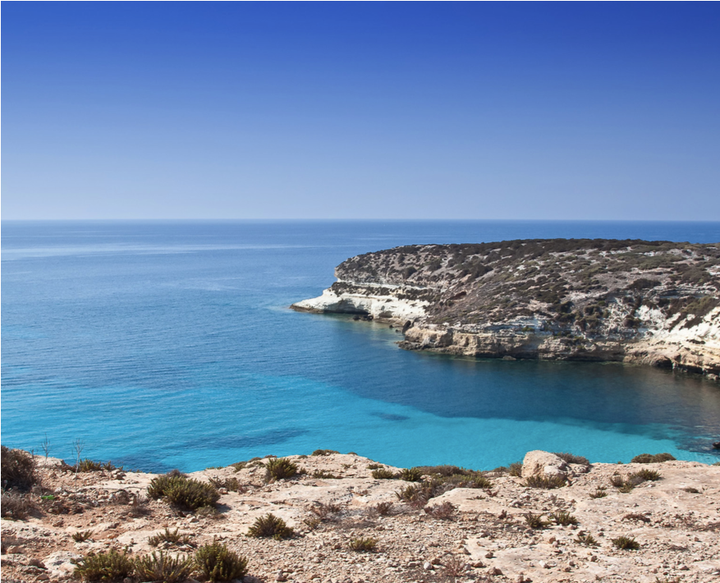
LINOSA
The island of Linosa is in the heart of the Mediterranean, closer to Africa than Sicily. Along with Lampione and the more famous Lampedusa, it is part of the archipelago of the Pelagie Islands and to reach it you need to take the hydrofoil from Porto Empedocle, which is not far from Agrigento (Sicily).
Linosa is a volcanic island with jagged coastlines and lava reefs, as well as sea floors that many consider the most beautiful of the Mediterranean. What stands out here is the liveliness of the pastel houses with windows edged in dark colors. The place is timeless, with an unforgettable sea and untamed nature. Linosa is also home to the loggerhead sea turtle, which is on the endangered list. The only restaurants on the island are Errera and Trattoria Pizzeria da Anna, where you won’t spend more than 30 euros a head. For accommodation, new B&Bs are cropping up every year, set up by the island’s 450 residents, like La Posta, with traditional rooms and prices for all wallets.
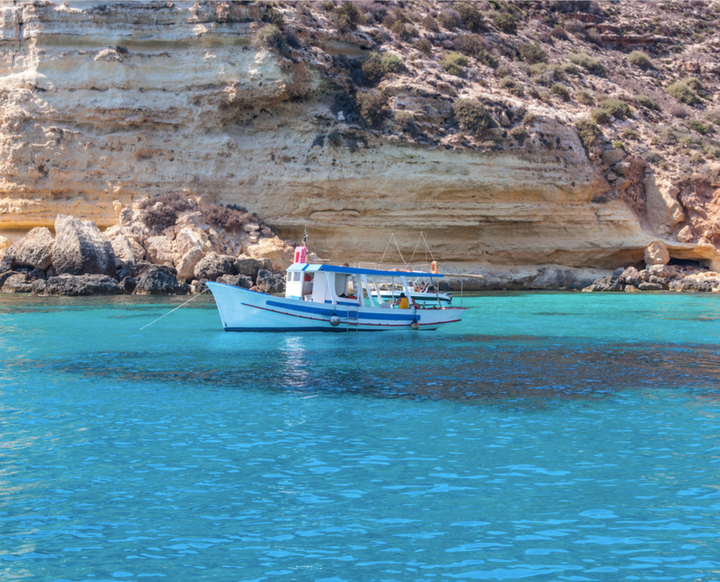
VENTOTENE
The remains of a prehistoric volcano, the island of Ventotene, just 1.15 square miles, is rich in history. Be sure to see Villa Giulia, the lavish residence of the daughter of the Roman emperor Augustus, and the Porticciolo Romano, carved from volcanic rock and still used as a port for the ferries arriving from Formia, in the province of Latina. The position of the island of Ventotene has made it a stopping place for thousands of migratory birds flying from South Africa to northern Europe, and this is why the island has been a marine and terrestrial park for nearly 20 years. For accommodation, there’s Pensione La Vela, and the best restaurant is Il Giardino, elegant but affordable (32 euros per person). The island of Santo Stefano, just one nautical mile from Ventotene, is dominated by the ex-penitentiary built in the 19th century and abandoned in the 1960s. Santo Stefano is no longer inhabited, but can be visited during the day.
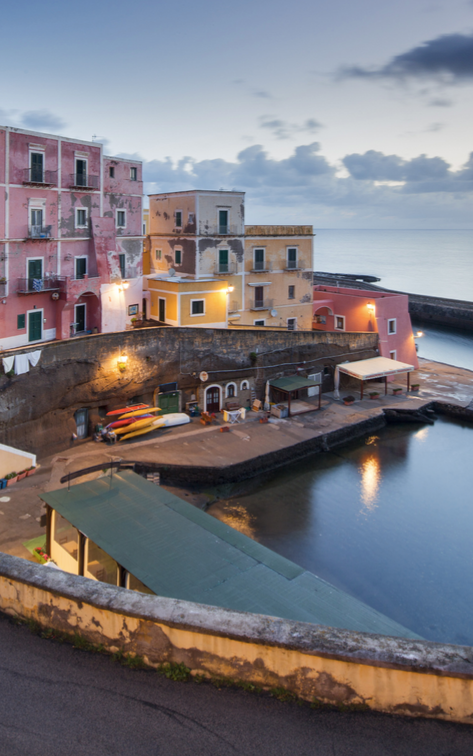
SAN’ANTIOCO
If Sardinia’s long beaches aren’t enough for you, then head to the southern end of the island to get to Sant’Antioco, an island of just over 41 square miles with two provinces, Sant’Antioco and Calasetta. It has a population of 15,000 and is largely uninhabited, with just a few houses dotting the countryside. Demanding tourists tired of the built-up areas typical of most shorelines will love the untouched spaces, pristine coasts and long stretches of beaches without a road, accessible only by boat, on foot or on mountain bikes. For an inexpensive place to stay, try Bed&Breakfast Gaulos, which also offers customers bikes to tour the island. And for a different kind of dinner, try Motobarca Alessandro Prima: first you go fishing, and then you dine on what you’ve caught.
